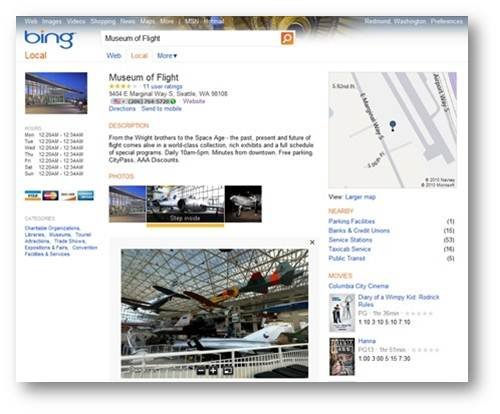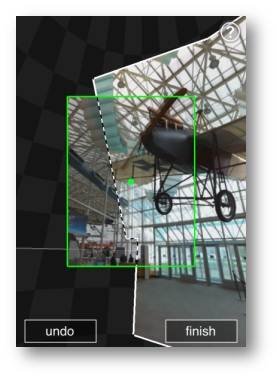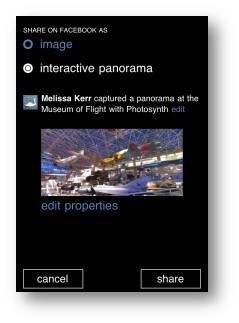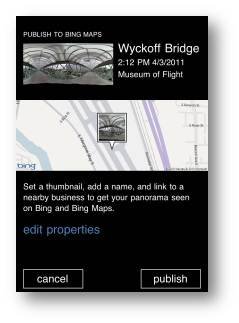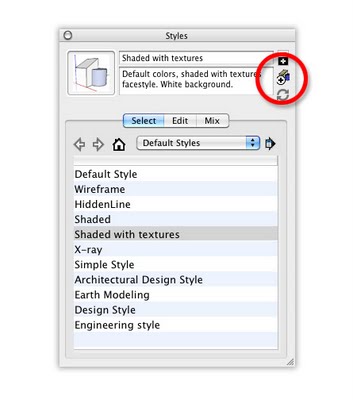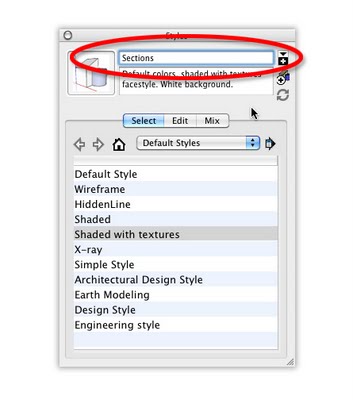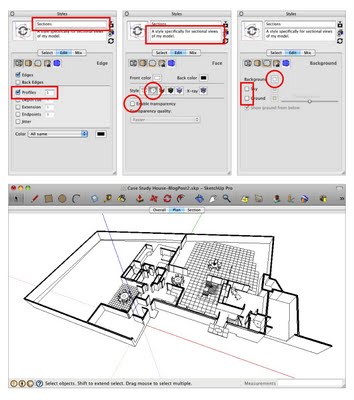In this video we show how to use Microsoft MapPoint to use the both the Data Mapping Wizard to show demographic data and the Import data wizard to add your sales data numbers as a layer on top.
Capture and Share Panoramas Anywhere You Go with the Photosynth App
What does a beautiful mountain pass, your favorite coffee shop, and your blossoming backyard garden all have in common? They’re all places you would love to capture and share, but a single photograph just won’t do.
Today, we’re introducing the official Photosynth app which lets you capture amazing panoramas of your favorite places to share with your friends and even the world with Bing Maps. Photosynth’s interactive panoramas allow you to look left, right, up and down, letting you capture and view more of the places you visit.
Here’s a look at our Photosynth app:
Using the latest computer vision technology, the Photosynth app makes capturing panoramas fun and engaging, while creating sharp, high-resolution results. With the app, you can process, view, and store your panoramas directly on your device. Then, share them in a variety of ways, including to Facebook as images or as interactive panoramas (hosted for free) on Photosynth.net.
Why are we at Bing so excited about this Photosynth app? Now, you can become part of the Bing Maps experience wherever you go. After capturing a great panorama of a museum you love or a beautiful garden, choose to publish to Bing Maps and it could be seen by the world. From the map, “dive in” and see your panorama next to that museum. Or, experience it seamlessly alongside the museum’s listing in Bing (if tagged with the location name).
With the Photosynth app you can:
- See your panorama take shape with each picture you take
- Get high-resolution results in all directions with advanced, on-device stitching
- See most panoramas within seconds of taking your last picture
- Zoom, pan, stretch, and view your panorama in landscape or portrait mode
- Save and view your panoramas on your device and view them online at Photosynth.net
When you’re ready to share your panoramas, you can:
- Upload to Facebook as images or interactive panoramas (hosted for free) on Photosynth.net
- Publish your panoramas to Bing Maps for the opportunity to see your panoramas on the map (Using the Bing Maps Photosynth map app) or with Bing local business listings See images of your panoramas automatically saved to the device Camera Roll
The Photosynth app is available now for a variety of iOS devices, including the iPhone 4, iPhone 3Gs, iPod Touch Fourth Generation, and the iPad 2 running iOS 4.1 and later (the Photosynth app is coming next to a Windows Phone near you). You can download the app for free from the iTunes App Store today athttp://www.itunes.com/apps/photosynth
SketchUp: Better sectional views in LayOut
Cutting plans and sections through your SketchUp models is the very definition of “hott”—everybody knows that. Getting those plans and sections to appear properly in your LayOut documents is a tricky proposition, though. Maybe this will help.
The Problem
Here’s the scenario: You have a building model. You want to show a plan and a section in a LayOut document derived from your model. This involves using Section Cuts to make the slices. This sounds simple enough, but there are two factors that complicate matters significantly:
- You need to create a new style specifically for the scenes that show your Section Cuts. If you don’t, it’s really complicated to make sure unsightly Section Plane objects don’t show up in your LayOut document. The image below provides a visual explanation.
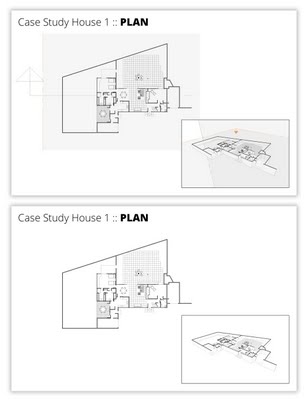 Top: If you’re not careful, your Section Plane objects will show up in your LayOut document. Bottom: Things look much better when they don’t.
Top: If you’re not careful, your Section Plane objects will show up in your LayOut document. Bottom: Things look much better when they don’t.- You need to use Scenes to let LayOut “see” each of your two Section Cuts (plan and section) independently. Without setting up scenes in your SketchUp model, there’s no way to assign specific a Section Cut to a viewport in LayOut. The blog post Connecting SketchUp Scenes to LayOut model viewports goes into more detail about this.
The Solution
The key to making this process work is to create a custom style specifically for sectional views of your model. Here’s how:
Step 1
Choose Window>Styles to open the Styles Manager.
Step 2
Click the Create New Style button (see below).
Step 3
Give your style a meaningful name; I suggest something like “Sections”. Press Enter on your keyboard to make sure it sticks.
Step 4
Use the settings in the Edit tab to make your model look exactly the way you want it to.
Step 5
IMPORTANT: Under “Modeling Settings”, make sure the Section Planes checkbox is deselected.
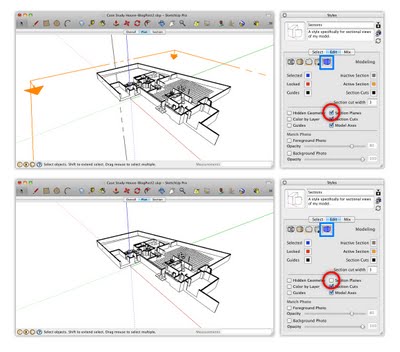 Deselecting the Section Planes checkbox in the Modeling Settings section of the Edit tab is the key to making sure your Section Planes are invisible.
Deselecting the Section Planes checkbox in the Modeling Settings section of the Edit tab is the key to making sure your Section Planes are invisible.Step 6
Click the Style thumbnail image to update your style with the changes you’ve made since you created it in Step 2.
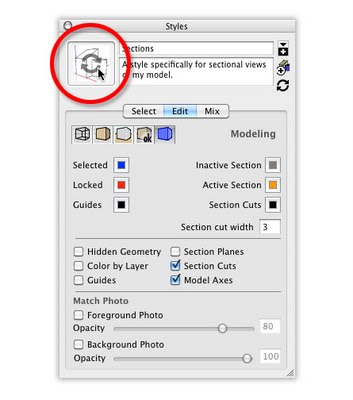 Click a style’s thumbnail image to update it. This saves the settings you’ve changed since you started editing it.
Click a style’s thumbnail image to update it. This saves the settings you’ve changed since you started editing it.Now that you have a custom style just for sectional views, you can apply that style to all the scenes that show Section Cuts. In my case, I created a new scene for each Section Cut. They’re called “Plan” and “Section”, appropriately enough.
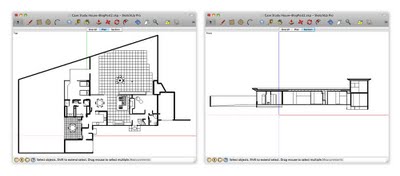 The “Plan” and “Section” scenes in my SketchUp model are set up to show different active Section Cuts. The style “Sections” is applied to both.
The “Plan” and “Section” scenes in my SketchUp model are set up to show different active Section Cuts. The style “Sections” is applied to both.To make sure that the Sections style is applied to each scene, do this:
1) Activate one of the Section Cut scenes by clicking its Scene Tab.
2) Apply the Sections style by choosing it from the Select Tab in the Styles Manager.
3) Right-click the current Scene Tab and choose Update Scene.
4) Repeat Steps 1 to 3 for each of your other Section Cut scenes.
5) Save your SketchUp file.
With the right style applied to your sectional scenes, you’re ready to assign those scenes to different viewports in LayOut. Again, I covered the nuts and bolts of this process in this blog post from last year.
Another thing you should know
Every time you add a new Section Cut, all of the existing Section Plane objects in your model become visible. The custom style you created doesn’t change, though; as long as that style is applied to your scenes, and those scenes are assigned to your viewports in LayOut, everything should be fine. If (after adding a new Section Cut) you want to hide all of your Section Plane objects, all you have to do is choose View>Section Planes from the menu bar. Voilà!
Extra Bonus: This blog post from last year provides some suggestions for ways to poché (fill in) your Section Cuts.
Update: A previous edition of this blog post included some (bad) advice about waiting until you get to LayOut to assign orthographic views. On the advice of an expert, I’ve taken that bit out. Apologies for the confusion.
